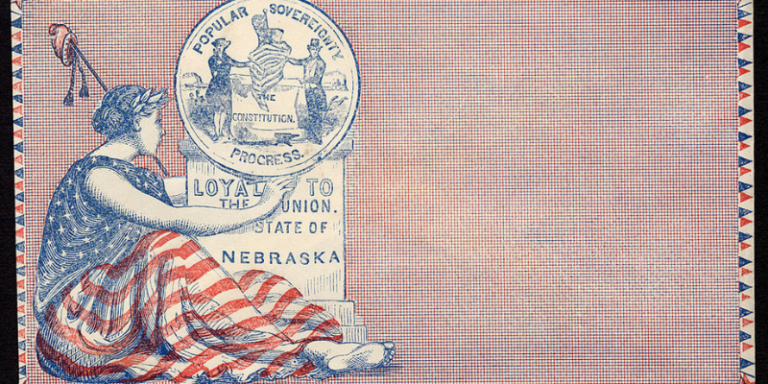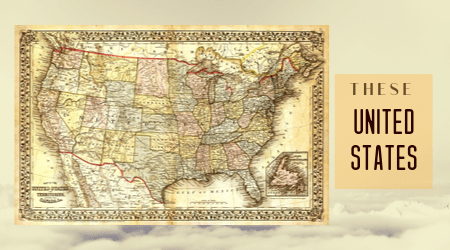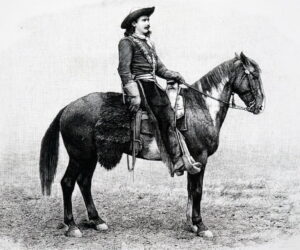Nebraska: The Cornhusker State
Though entirely landlocked, Nebraska has its own navy.
By: Kelli Ballard | July 15, 2020 | 474 Words

Civil War Envelope (Photo by William RidenburghThe New York Historical SocietyGetty Images)
Nebraska, the Cornhusker State, didn’t join the Union until two years after the Civil War. It became the 37th state on March 1, 1867. Its name came from the Otoe Indians and means “flat water,” referring to the Platte River, which is a long and shallow body of water that flows throughout the state.
Americans started to settle the area in the 1840s using the Oregon Trail. Much of the land at that time had been set aside as Indian Territory, but eager settlers ignored the boundaries and built their homes on the land instead. The Kansas-Nebraska Act in 1854 created the Nebraska Territory and then the Homestead Acts during the 1860s really saw a movement of settlers to the area.

The capital city at the time was Omaha, but after achieving statehood, it was moved to Lancaster. During the Civil War, much of the area sided with the Confederacy. After the war, a Nebraska legislator wanted to keep the capital in Omaha and devised a plan that he thought would ensure success. He suggested renaming Lancaster to Lincoln, in honor of Abraham Lincoln, the Union president who had ended slavery before being assassinated. The lawmaker had hoped Southern sympathizers would be outraged, but the plan failed, and the capital was moved to the newly renamed town of Lincoln.
By the late 1800s, most of the Native Americans had been removed from the territory; the Sioux and Cheyenne were forced to move to Oklahoma’s Indian Territory. The state thrived with ranchers and farming, yet still to this day remains sparsely populated compared to other states.
Nebraska is also unique as it is the only state governed by a nonpartisan legislature – the lawmakers are not officially recognized as belonging to a political party. Senator George Norris promoted the idea, feeling that such a government would be more cost effective and would provide the ability to prevent secretive committee meetings. Since 1937, the state has been governed by this single-house legislature, and on the voting ballots, there are no party affiliations listed.

(Photo by: Universal History Archive/Universal Images Group via Getty Images)
Interesting Facts
- In 1927, Edwin Perkins ran a small mail-order business in Hastings, where he sold items including “Fruit Smack,” which was a concentrated syrup. However, the bottles they were packaged in used to break while in transit, so he invented a concentrated powder that today we know as Kool-Aid.
- Nebraska has its own version of the historic English Stonehenge. Just north of Alliance is the Carhenge, a monument resembling the Stonehenge but made up of 38 old automobiles.
- Buffalo Bill’s Wild West show was developed in North Platte. First called the “Old Glory Blowout,” Buffalo Bill’s home, Scout’s Ranch, is still there. A state historical park now sits on 25 of the original 4,000 acres that he owned.
















